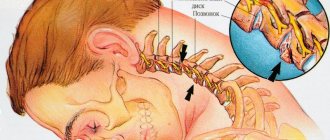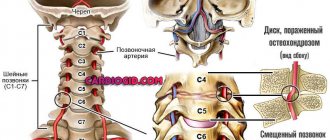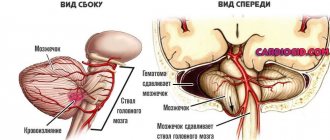Sore throat due to stress. It happens?
Hi all.
I often notice that after stressful moments my throat hurts. Today, for example, I lined up with a martyr, cried for an hour on the balcony, but I really get very upset every time (((And after about two hours my throat started to hurt. I didn’t get hysterical, I didn’t scream, and it’s warm outside. It’s definitely not a cold. And so every time after stress!(((How to deal with such an unpleasant phenomenon and have you encountered it? It looks like somatization. Or it doesn’t. In any case, if something hurts, you need to go to the doctor, and not to the forum)
In this section, only neutral information is published in topics and comments. Topics and comments containing advice, recommendations, promotion of alternative methods of treatment or other actions will be closed.
Perhaps you have tonsillitis, and psychosomatics are making themselves felt. Yes, it’s precisely because of resentment and stress.
Perhaps you have tonsillitis, and psychosomatics are making themselves felt. Yes, it’s precisely because of resentment and stress.
From severe stress, it’s like a noose on my neck, it’s like it’s choking me. Moreover, when I’m distracted, I occupy my head with something, everything goes away, as soon as I start thinking and overthinking, it appears again. And I don’t know what to do about it.
New features and design have appeared for the version of the Woman.ru Forum on computers. Tell us, what are your impressions of the changes?
I have a sore throat from stress, and there is a lot of stress in life! But! - no martyr is worth crying over for hours! What's wrong?! Or maybe this is not your martyr? A man should bring joy, not tears!
I have a sore throat from stress, and there is a lot of stress in life! But! - no martyr is worth crying over for hours! What's wrong?! Or maybe this is not your martyr? A man should bring joy, not tears!
I understand it. Of course it brings me joy, it’s just that I can cry from every stupid thing ((
From severe stress, it’s like a noose on my neck, it’s like it’s choking me. Moreover, when I’m distracted, I occupy my head with something, everything goes away, as soon as I start thinking and overthinking, it appears again. And I don’t know what to do about it.
Psychosomatics in its purest form. According to popular belief, all ailments are caused by nerves
as you know, all diseases are caused by stress, try to be less nervous, your throat is a weak point, harden it, boost your immunity, more natural products, honey, linden, ginger, cocoa butter (yodangin) is good for the throat, kills germs and strengthens the immune system.
I constantly encounter when I get nervous, I don’t react at all, it goes away on its own.
I have the same thing. I also have a problem with the thyroid gland and had frequent ARVIs. Since I treated my throat, it has become a little better. Stress worsens the immune system, you need to deal with yourself and with the martyr.
From severe stress, it’s like a noose on my neck, it’s like it’s choking me. Moreover, when I’m distracted, I occupy my head with something, everything goes away, as soon as I start thinking and overthinking, it appears again. And I don’t know what to do about it.
I have the same thing, like stress, the immune system is in shock and first I get a sore throat and then the flu
Yes, in fact, there can be many reasons. In any case, we need to treat, not endure. Lysobact helps me with a sore throat. And the good thing is that it does not mask the symptoms, but immediately acts on the cause.
About a month and a half ago I was terribly overreacting, for two weeks I was under terrible stress, my temperature rose to 37, now a month and a half has passed, the temperature rises from 10 in the morning and lasts until 10 in the evening 37-37.2; it bothers me proudly, there is a feeling of a lump in the throat, it tickles somewhere in the chest, it happens that the pain from the throat radiates to the ears, the neck and shoulders hurt when touched. During this time, I checked with a gynecologist, dysbacteriosis was discovered, I went for an ultrasound of the thyroid and pelvis, everything was normal, I had an OC test, the result was good, no violations, I went to the ENT specialist, no problems were found, I took a test for progesterone, my hormone level was excellent , did fluorography, everything is fine. The doctors are already laughing at me. But the symptoms remain the same. In the evening I put the children to bed, and the temperature reaches 36.6; I don’t know what it is.
Go see a gastroenterologist
About a month and a half ago I was terribly overreacting, for two weeks I was under terrible stress, my temperature rose to 37, now a month and a half has passed, the temperature rises from 10 in the morning and lasts until 10 in the evening 37-37.2; it bothers me proudly, there is a feeling of a lump in the throat, it tickles somewhere in the chest, it happens that the pain from the throat radiates to the ears, the neck and shoulders hurt when touched. During this time, I checked with a gynecologist, dysbacteriosis was discovered, I went for an ultrasound of the thyroid and pelvis, everything was normal, I had an OC test, the result was good, no violations, I went to the ENT specialist, no problems were found, I took a test for progesterone, my hormone level was excellent , did fluorography, everything is fine. The doctors are already laughing at me. But the symptoms remain the same. In the evening I put the children to bed, and the temperature reaches 36.6; I don’t know what it is.
Hello, did you find the reason?
The user of the Woman.ru website understands and accepts that he is fully responsible for all materials partially or fully published using the Woman.ru service. The user of the Woman.ru website guarantees that the placement of materials submitted by him does not violate the rights of third parties (including, but not limited to copyrights), and does not damage their honor and dignity.
The user of the Woman.ru site, by sending materials, is thereby interested in their publication on the site and expresses his consent to their further use by the owners of the Woman.ru site. All materials on the Woman.ru website, regardless of the form and date of publication on the site, can only be used with the consent of the site owners.
Use and reprinting of printed materials from the woman.ru website is possible only with an active link to the resource. The use of photographic materials is permitted only with the written consent of the site administration.
Posting intellectual property objects (photos, videos, literary works, trademarks, etc.) on the woman.ru website is permitted only to persons who have all the necessary rights for such posting.
Copyright (c) 2016-2020 Hirst Shkulev Publishing LLC
Online publication “WOMAN.RU” (Zhenshchina.RU)
Certificate of registration of mass media EL No. FS77-65950, issued by the Federal Service for Supervision of Communications, Information Technologies and Mass Communications (Roskomnadzor) on June 10, 2016. 16+
Founder: Limited Liability Company "Hirst Shkulev Publishing"
Editor-in-Chief: Voronova Yu. V.
Editorial contact information for government agencies (including Roskomnadzor):
What is pharyngoneurosis
A nervous spasm in the throat refers to a serious disease of the infundibulum, which connects the mouth and esophagus. The disease manifests itself in the form of desensitization of the mucous tunnel, the length of which is 10-12 cm. The reason may lie in mental disorder, stress and frequent excitement. Anyone can feel discomfort in the throat, tickling, cough, which appears sharply, unexpectedly and mainly before an important conversation or meeting.
This manifestation is considered one of the first symptoms of nervous tension, which gradually disappears. A lump in the throat can appear mainly from nerves, since there are many nerve endings in the throat, and any disturbance will lead to the appearance of symptoms. When a nervous breakdown is serious, the reaction overtakes the person very quickly. This disease often affects young people and older people. To overcome the disease, you need to go to a psychologist or neurologist.
Pharyngoneurosis is more common in young people
Methods for treating spasms
How to relax your throat muscles? First of all, it is necessary to determine the causes of such symptoms. To cope with this condition, you need to take the following measures:
- Provide the person with complete peace and a flow of fresh air into the room.
- Use ammonia.
- Offer the patient a glass of water.
If these methods do not give the desired results, you need to hold your breath a little or gently pat your back. Another effective method is to stimulate an attack of vomiting. In case of a prolonged attack, you need to take a warm bath. If the spasms are caused by a stuck bone, surgery may be necessary.
If attacks appear constantly, you should definitely consult a doctor. This may indicate the development of dangerous pathologies.
- If a person has neurosis, psychotherapy is used. A mandatory element of treatment is the use of medications - tranquilizers and antidepressants.
- If muscles cramp as a result of allergic swelling, doctors prescribe antihistamines. So, a specialist may recommend the use of suprastin or tavegil.
Spasms in the throat, which are accompanied by an attack of suffocation, may indicate the development of bronchial asthma. In such a situation, you need to use special medications - ephedrine, antasman, theophedrine.
Causes of the appearance of a nerve lump
Many people who experience a lump in the throat due to nervousness suffer from mental disorders and may experience stress more often than others. The causes of choking in the throat due to nervousness are different, but the main ones are:
- throat infections;
- inflammation;
- damage to the nervous system;
- complications after various diseases;
- paralysis;
- the appearance of cancer cells;
- osteochondrosis;
- harmful work;
- dirt, chemicals, fear, shock, stress, bad habits;
- allergies to medications.
Symptoms of the disease
A sore throat due to nervousness has individual characteristics. It all depends on the stage of the disease and the sensitivity of the organs. Doctors distinguish 5 types.
- Anesthesia. During it, sensitivity in the throat disappears. It hurts a person to swallow saliva and food. Tension is observed in the chest and collarbone area. This reaction occurs during a hysteria. It is painful for the patient to swallow and has difficulty breathing. Loss of sensation is observed due to sclerosis, brain cancer and syphilis.
- Hypesthesia. The symptoms of this disease are similar to the symptoms of anesthesia, but they are not as pronounced. A person feels discomfort when swallowing. If the discomfort lasts for a long period, it can cause asphyxia. Hypoesthesia appears during influenza.
- Hyperesthesia. A sign of obvious neurology, causing a spasm of intense sensitivity. With this disease, a person feels itching and burning in the throat. It is impossible to swallow food, it is difficult to breathe and speak. Such symptoms appear due to nervousness.
- Hyperalgesia. With this disease, the throat and thyroid gland often hurt. The pain increases while eating.
- Paresthesia. The symptoms of this disease are different for each person. They manifest themselves in the form of itching and pain. The person feels as if there are large objects in the throat. Such symptoms often occur in women during menopause.
Clinical picture
Typically, spasms in the throat are characterized by the following manifestations:
- difficult and noisy breaths - this condition is called inspiratory dyspnea;
- severe tension in the muscle tissue of the neck - may be accompanied by pain;
- difficulty swallowing, sensation of a lump in the throat - this condition is characteristic of damage to the pharynx, not the larynx;
- pallor of the dermis - if the spasm is present for a long time, a bluish tint appears;
- cold sweating.
In simple cases, the spasm disappears on its own literally within 2 minutes. At the same time, breathing is normalized and swallowing is restored.
In difficult situations, medication assistance is required. If it is not provided in time, there is a risk of general seizures. The person may foam at the mouth. Sometimes patients lose consciousness, their cardiac activity is weakened and there is a danger of death. In this case, death occurs due to suffocation.
If your throat and neck muscles hurt due to external irritating factors - food, medications, inhaled air, the cause can be easily determined. If pathologies are the provocateur, you need to analyze the existing clinical picture:
- With pharyngitis, tonsillitis and laryngitis, spasm is characterized by difficulty swallowing, pain, and hoarseness in the voice. The key symptoms are pain and sore throat.
- Allergic reactions, in addition to a spasm in the throat, are accompanied by a feeling of itching and soreness. As a result, a person develops a painful cough. In addition, there is a risk of other symptoms appearing - rhinitis, sneezing, clear nasal discharge, tearing, pain in the eyes.
- Disturbances in the functions of the digestive organs, caused by pathological contraction of the sphincters, lead to the entry of stomach contents into the esophagus. This condition is always characterized by the development of heartburn. The sensation of a lump in the throat is due to irritation of the pharynx by acid.
- The formation of a diaphragmatic hernia is usually associated with obesity. This condition is characterized by the appearance of spasms in the throat and belching. Sometimes a person vomits after eating. In addition, there is a risk of vomiting after eating, pain in the chest and hypochondrium. These signs increase with bending.
- An increase in the size of the thyroid gland in the initial stages is characterized by sweating, high fatigue, general weakness and increased irritability. A person also experiences stool problems and changes in the menstrual cycle. Hand tremors and increased heart rate are often observed. As the thyroid gland increases in size, spasms in the throat occur.
- With psychoneurological disorders, in addition to numbness in the larynx and breathing problems, there is a feeling of dryness in the oral cavity. The person may have trouble swallowing saliva. Often there is a complete or partial loss of voice, increased irritability, anxiety, and difficulties with communication. With the development of vegetative-vascular dystonia and neurosis, panic attacks may appear. This condition is characterized by a feeling of a lump in the throat that makes it difficult to swallow saliva. Nausea and increased heart rate also occur.
- Tumor lesions of the esophagus are accompanied by constant spasms in the throat and increasing difficulties when swallowing. Against the background of these symptoms, progressive weight loss is observed.
Often the cause of this condition is an aortic aneurysm. This disease has various symptoms - it all depends on its location. When the aortic arch is affected, shortness of breath and suffocation are usually observed. This is due to compression of the bronchi and trachea.
If the inferior laryngeal nerve is damaged, a dry cough, hemoptysis, and hoarseness in the voice occur. When the ascending aorta is damaged, shortness of breath occurs, which is accompanied by dull pain in the retrosternal region.
It is not uncommon for the throat muscles to become tense after a stroke. This is due to dysregulation of breathing and swallowing functions. However, these symptoms usually go away after rehabilitation.
Definition of throat neurosis
Sore throat during stress - what to do? A sore throat is usually treated by a psychologist and a neurologist. You can also additionally consult with an ENT doctor and therapist. If a person feels the first appearance of symptoms after excitement, then the cause of the disease lies in the mental state. First, a person should be examined by a therapist to rule out possible pathologies, and only then by a neurologist. To do this, the patient undergoes the following tests:
- donate urine and blood to make sure there is no inflammation;
- hormone analysis;
- Ultrasound of the neck and thyroid gland;
- conduct Doppler ultrasound of the vessels of the neck and brain;
- X-ray of the respiratory organs to exclude possible tumors;
- tomography of the pharynx and brain. The analysis is carried out if sclerosis is suspected.
Diagnostics
As in the case of diagnosing all psychosomatic diseases, the doctor first prescribes a series of examinations to exclude organic pathologies. If there are no abnormalities in the body in which symptoms of throat neurosis would be included in the clinical picture, the patient receives a referral to a psychotherapist.
The list of diagnostic measures includes:
- general blood test to determine inflammatory processes in the body;
- blood test for syphilis;
- X-ray of the brain and neck to exclude a tumor;
- if multiple sclerosis is suspected, MRI of the brain;
- examination by an otolaryngologist, throat swab.
Methods of treating the disease
Treatment of a nervous lump in the throat can be done in several ways. It is necessary to determine the method of treatment after symptoms and diagnosis. A person should also consult a psychologist who will find out what the cause of stress is. With the help of a specialist, the psyche is improved step by step. He teaches a person:
- control your emotions in any unpleasant situations;
- highlight positive emotions and relegate negativity to the background;
- Ignore negative people and try not to start conflicts with them.
The following procedures will help relieve throat spasms due to nervousness:
- electrophoresis;
- breathing exercises;
- hypnosis;
- healing shower;
- neck massage.
Relaxation in sanatoriums helps to normalize the nervous system and stop stressing too much.
Walking in the fresh air and beautiful landscapes improves the mental state and relaxes a person, strengthens the immune system and prevents the development of the disease.
Treatment with traditional methods
Traditional recipes help to treat a nervous lump. They remove the signs of a lump in the throat and also do not contain contraindications. Many people use a decoction of willow bark. To prepare it, take 1 tsp. herbs and pour 200 ml of boiling water. The mixture is kept on fire until it boils, and then boiled for 10-15 minutes. Strain the broth and drink 1 tbsp. l. while eating food.
Mint has proven itself well. It has a calming effect, will help overcome mental disorders and relieve nervous spasms.
The leaves of the plant can be added to tea or prepared as a decoction. To get rid of a nervous lump in the throat, you need to take 100 ml several times a day.

Peppermint tea is an excellent sedative
Tension in the throat
The statement that all health problems are caused by a malfunction of the nervous system is not without meaning. The nervous system controls all processes occurring in the body. If a person is often nervous and constantly stressed, the result can be a serious illness.
People often complain of a constant lump in their throat; it is difficult for them to swallow, and sometimes even to breathe. They turn to specialized doctors, but they cannot establish a diagnosis. Few people associate a lump in the throat with disturbances in the functioning of the nervous system, and this may be the first symptom of pharyngeal neurosis.
Laryngeal neurosis refers to the pathology of the funnel-shaped canal connecting the mouth to the esophagus. The pathology is expressed in loss of sensitivity of the mucous membrane of this canal, the length of which is in the range of 10-12 centimeters.
The cause of the disorder is strong psycho-emotional tension, stress, and constant worry. Almost every person has felt a sore throat, tickling, or cough that began for no apparent reason before an important meeting or speech.
In fact, this was the first symptom of pharyngeal neurosis, which disappeared gradually. The man calmed down, and his condition returned to normal.
Throat neurosis occurs due to dysfunction of the nervous system. Since a large number of nerve endings are concentrated in the mucous membranes of the larynx, any disorder can manifest itself in a number of symptoms. With severe nervous tension, a reaction occurs almost immediately.
This disease most often affects middle-aged and older people. To get rid of such a disease, you definitely need to contact a neurologist or psychiatrist.
Neurosis of the pharynx is always a concomitant symptom of another disease. Symptoms similar to the appearance of a nervous lump in the throat may indicate:
throat diseases caused by infections; inflammatory processes occurring in the throat or larynx; infection of the central nervous system or complications after certain diseases; paralysis; damage to cancer cells of the brain or its membranes; osteochondrosis of the spine, in particular the cervical region; work in harsh conditions, harmful substances, dust, chemicals; severe fear and stress; bad habits; complications after taking medications.
Experts identify four main forms of pharyngoneurosis, each of which has its own symptoms:
anesthesia; hypoesthesia; hyperesthesia; paresthesia.
More details about the symptoms of each form of pharyngeal neurosis:
Anesthesia of the throat is characterized by a decrease in the sensitivity of the larynx or its complete absence. The patient has difficulty swallowing. Typically, similar symptoms occur during hysteria. This may also indicate a blockage of the signal that is sent by brain cells to the larynx. This often indicates a malignancy in the brain, infection, paralysis or multiple sclerosis. Hypoesthesia . This form has similar symptoms to anesthesia, with the only difference being that it manifests itself more mildly. The patient can swallow, although the pharyngeal mucosa remains insensitive. Hypesthesia can occur against the background of previously suffered viral diseases or influenza. It will take some time for sensitivity to be restored. If the symptoms do not go away, but only worsen, it is imperative to consult a doctor. Neglect of treatment in some cases can lead to death, as if the sensitivity of the pharynx is lost, a person runs the risk of choking on food or water. Hyperesthesia . This form of pharyngoneurosis, on the contrary, is characterized by increased sensitivity. The patient complains of difficulty eating food. Symptoms of this form are constant pain in the throat, tingling and itching. Hyperesthesia can be a consequence of tonsillitis, tonsillitis or pharyngitis. Symptoms appear more clearly if a person has a smoking habit. Also, strong emotional overexcitation leads to breathing difficulties. All symptoms disappear when the emotional state returns to normal. Paresthesia . The symptoms of this form practically repeat hyperesthesia. The picture is complemented by the following signs: severe itching; feeling of numbness; sensation of a nervous lump in the throat. Patients also complain of constant headaches, the intensity of which increases when eating or swallowing. Paresthesia is typical for people who are characterized as emotionally unstable, with increased irritability. Often complaints of a lump in the throat come from women during menopause.
Anyone who experiences a sore throat or difficulty swallowing should pay attention to these symptoms. Perhaps this is the first manifestation of serious diseases.
In any case, it would be a good idea to seek advice from a specialist.
He will conduct the necessary diagnostics, namely:
Order an X-ray of the neck . Using this study, the cause of the disorder can be determined. Medical practice shows that pharyngeal neurosis is caused by problems with the spine or its irritation. Conduct a tomography of the spine along its entire length.
After an examination and diagnosis of pharyngeal neurosis, the doctor prescribes the necessary treatment, which is selected solely based on the severity of the symptoms and clinical picture.
The patient may be prescribed:
blockade based on novocaine; electrophoresis procedures; psychotherapy sessions using specially developed methods; taking medications; taking necessary minerals and vitamin preparations.
The basis for successful treatment of throat neurosis is identifying the disease that caused it. If the cause is a malignant tumor, then its removal and a course of chemotherapy are used.
Massage, physical therapy and physiotherapy will help alleviate the patient’s condition and restore the sensitivity of the larynx if the functioning of the musculoskeletal system is impaired.
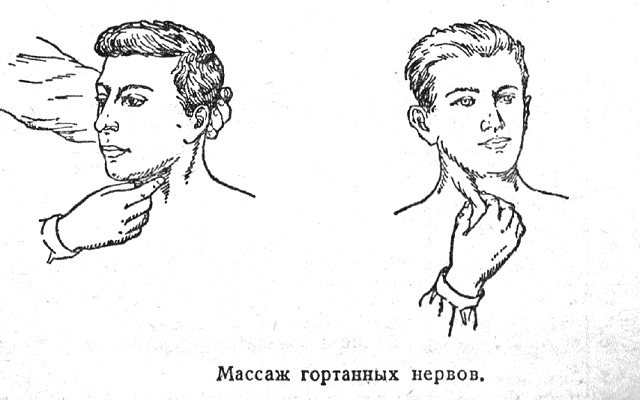
Smoking, eating too hot or cold food, or alcohol can further worsen the situation. All this irritates the surface of the pharynx, thereby increasing the recovery period.
Traditional medicine has proven well in the treatment of neurosis. They help alleviate all the symptoms of the disease, remove the nervous lump in the throat and have no contraindications.
It has been successfully used to alleviate the condition of willow bark. A decoction is prepared from it. For it, take one teaspoon of bark and pour 200 ml of hot boiled water. This mixture is brought to a boil and simmered over low heat for 10-15 minutes. The broth is cooled and taken one tablespoon during meals.
Mint has long been known for its sedative properties and ability to cope with nervous disorders, including pharyngeal neurosis.
Mint leaves can be added to tea or made into a decoction. To prepare it you need a tablespoon of dry raw materials. It is poured with boiling water and brought to a boil over low heat. The broth is cooled and filtered. To get rid of symptoms, it is enough to consume 100 ml of decoction twice a day.
To prevent neurological complications, it is necessary to minimize the impact of negative factors. For this we recommend:
proper rest and sleep - you need to sleep at least 8 hours a day in a well-ventilated area; pay attention to proper nutrition, try to include as many vegetables and fruits in your diet as possible; Walking in the fresh air helps relieve nervous tension; try to avoid nervous shock and stress; give up bad habits forever.
Symptoms that arise due to stress disappear without a trace if you give the body a few days of rest. The nervous system must return to normal and recover. To do this, you can do yoga and meditation. Embroidering pictures and drawing also perfectly calms the nerves.
If pain in the larynx and sore throat are a consequence of viral diseases, then doctors recommend following a special diet for several days.
This doesn't mean you need to give up food completely. It is necessary to give preference to dishes and products that do not irritate the walls of the larynx and do not irritate it. Food should be soft and easy to chew.
If you consult a doctor for help in a timely manner, strictly follow his recommendations, give up bad habits, and also avoid stress and pay attention to your emotional state, then the outcome of treatment will be favorable.
The part of our body called the throat has many functions. It consists of the pharynx and larynx, in which, with the help of the vocal cords, a person’s ability to speak is formed.
The throat has a collection of muscles that perform various jobs: for example, when the vocal cords are tense, the work of the muscles allows them to relax. Painful sensations in the muscles of the pharynx and larynx are a common occurrence and are individual in nature, i.e. are not necessarily a symptom of a specific disease. If muscle tissue is damaged, a sore throat will certainly occur, but often this is not a reason to panic.
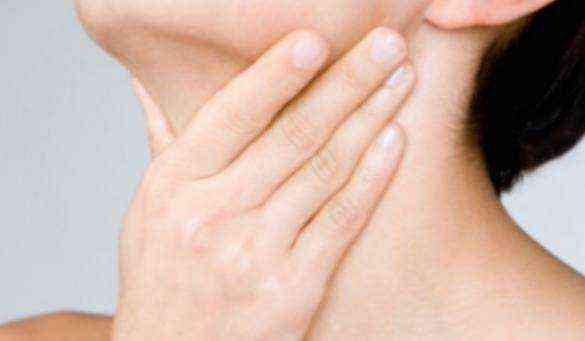
Pain in the throat muscles can be the result of traumatic injury, overstrain of the vocal cords, which is often found among vocalists, teachers, and announcers. The cause of the pain may be a long-term spasm that occurs as a result of genetic abnormalities, infections, or inflammatory processes. When the muscles are tense, there is a lump in the throat.
The muscle in the throat may hurt for the following reasons:
disorders associated with motor function (overstrain or, conversely, weakening of muscle tone); inflammatory diseases (laryngitis, which has an acute or chronic form, laryngotracheitis); the appearance of pain occurs in the process of inflammation of the cartilage tissue of the larynx, with the involvement of muscle tissue; reduction or even closure of the lumen of the larynx ;the throat, or rather its muscles, hurts as a result of drug intoxication.
The following problems are identified:
Deep depression can provoke complete loss of voice. Dysfunction occurs as a result of overexertion or, conversely, due to weak throat muscles and their relaxation. Often, movement disorders are observed in children diagnosed with rickets and whooping cough. The muscles in the throat can ache as a result of incomplete or complete paralysis. A similar condition appears due to pinching of the vocal cleft muscle. This occurs against the background of a pathological decrease in calcium in the blood plasma as a result of a lack of sunshine and vitamin D at an early age. Disorders associated with motor function, as a result of a violation of a person’s psychological state. It is characterized by a strong muscle spasm, the patient feels a strong need for air. The voice is hoarse, hoarse, the patient switches to a whisper or stops speaking altogether. Pain in the larynx as a result of mental trauma, tension in the muscles of the pharynx, as well as viral diseases. As a result of deep depression, apathy, mental disorders, complete loss of voice occurs. Dysfunction occurs as a complication as a result of non-compliance with recommendations for the treatment of laryngitis, in which the patient needs voice rest.
Inflammatory abnormalities result from:
laryngitis; infectious and inflammatory lesions of the larynx and trachea; inflammation of the perichondrium and cartilages of the larynx; narrowing of the lumen of the larynx.
Pain in the throat muscles can be the result of drug intoxication, which damages the motor neurons of the laryngeal muscles. This is mainly facilitated by drugs for the treatment of malaria, for example, bigumal, acrhin, plasmocide and others. To determine what actually causes muscle pain in the larynx, you need to accurately describe the accompanying symptoms. After all, only then can the disease be specifically diagnosed and appropriate treatment prescribed.
Noticing the first symptoms of muscle dysfunction is not that difficult. Pain in the throat muscles manifests itself in hoarseness of the vocal cords, timbre changes, and it becomes difficult to breathe. The voice turns into a barely audible whisper.
The following symptoms of diseases are distinguished:
With laryngitis, pain, dryness, and a sore throat are felt. The body temperature remains for a long time within 37.5 degrees, a cough appears, the mucous membrane swells. With paresis of the larynx, muscle pain is felt, the voice is weak and hoarse, it becomes difficult to breathe. With false croup, there is a painful rapid heartbeat, shortness of breath and, as a result, muscles in the throat become painful. With inflammation of the perichondrium and cartilage of the larynx, pain is felt in the neck and directly in the muscles of the throat. Breathing becomes difficult and in extreme cases causes suffocation.
All diseases of the larynx have similar symptoms - hoarseness, weakening or absence of voice. Pain in the throat muscles is aching in nature, in contrast to pain in the larynx during respiratory diseases or the flu. Therefore, any symptoms and signs need urgent diagnosis. At the first discomfort in the throat, you should not delay treatment; it is better to immediately seek help from a doctor.
To make diagnosis easier, the patient needs to promptly seek help from medical staff. But, unfortunately, this does not always happen; the disease becomes chronic and the muscles in the throat take on a neglected appearance. Diagnosis should be carried out in a mobile state of the larynx, which is almost impossible in case of illness.
You should not put off going to the doctor, because a timely examination can quickly help solve the problem.
Diagnostics include:
information about the medical history, living conditions of the patient, previous diseases, etc.; general examination of the patient; palpation of the larynx and exclusion of pain in it; palpation of the lymph nodes; pharyngoscopy; radiography; laryngoscopy; if necessary, a biopsy; referral for a blood test (general ); referral for culture testing for diphtheria, streptococci, etc.
If the unpleasant sensations in the larynx and pharynx are isolated, then they try to relieve the discomfort at home. To do this, you need to ensure complete rest for the vocal cords and relax overstrained muscles, talk as little and quietly as possible; remove from your menu:
spicy; hard, hot; sour food.
Include warm drinks and pureed food ingredients in your diet. In case of prolonged pain, you should urgently consult a doctor to obtain a treatment regimen. It may consist of physiotherapy and medications - aerosol, spray.
Compresses can be effective.
Treatment proceeds as follows.
The patient is advised to talk as little as possible and remain silent as much as possible. It is forbidden to overstrain the ligaments and muscles. Warm compresses, electrophoresis, and ultra-high-frequency therapy may be prescribed. The doctor determines sore throat muscles as a consequence of diseases such as pharyngitis and laryngitis. As a result, treatment is prescribed directly for these diseases. Pain is eliminated with the help of antibiotics. Chronic problems are treated surgically.
It is worth noting that treatment for pain in the laryngeal muscles rarely requires medication or surgery. Often, discomfort can be managed by keeping the vocal cords quiet (if possible, remain silent or talk in a whisper). Warming up procedures will also help relieve muscle tension. If you listen to all the doctor’s recommendations, your voice will be restored within a few days.
Our voice is a valuable resource that we must treat with great care. A common disease of the laryngeal muscles is excessive tension of the vocal cords. To avoid unpleasant sensations, the following preventive measures are recommended:
do not overcool; lead an active lifestyle; diversify your diet with healthy foods (vegetables, fruits); quit smoking; periodically consult an ENT doctor.
If your work involves excessive strain on the vocal apparatus (teachers, artists, speakers, singers), it will be useful for you:
do not overexert your voice for more than 3-4 hours in a row; train your vocal cords following the example of vocalists’ chants; carry out a set of breathing exercises; before a long performance, warm your throat with warm drinks (tea, compote, fruit juice); ventilate and moisturize excessively dry rooms; temper the body as a whole.

Our body is structured as a single whole, it is a huge and complex mechanism, and if suddenly some part of this system fails, then the violation affects everything. Therefore, slight tension in the neck may already indicate serious problems in the functioning of the body. The reason why there is pressure in the throat can sometimes be a consequence of curvature or damage to the cervical spine. Only a doctor can clearly explain this relationship.
In some cases, worry is unnecessary, but in others, neck pain is a clear signal of serious problems. It is especially dangerous when, in addition to all this, there is pressure in the throat. Most often, this indicates a malfunction of the thyroid gland. Its inflammation, its hyper- or hypofunctionality leads to proliferation, diffusion and an increase in the volume of this organ, which leads to sensations of pressure in the cervical region. Inflammatory processes, wherever their epicenter is (skull, jaw, throat), cause discomfort in the cervical region. There are also less serious reasons for such sensations. For example, with prolonged stress on this muscle group or after a sudden movement. A common draft can also serve as a banal reason. If it’s painful, then any ointment will do and gently massage the neck area to get rid of pain and tension in it.
If the pain is localized to the sides of the throat, it may be a rare inflammation of the carotid arteries (carotidynia). Aspirin will also help here, if it’s not too advanced.
If there is pressure in the neck, then this can say a lot. You can even make a list of the main possible reasons for this situation:
Exposure to draft Infections Thyroiditis Muscle spasms Mechanical damage, trauma Arthritis Carotidynia Osteochondrosis Cancerous tumor - in rare cases Pinched nerve
Preventive actions
To prevent stress and possible complications, it is necessary to reduce the effect of negative factors. To prevent depression, many experts recommend:
- proper rest;
- normal sleep, it should last at least 8 hours;
- ventilate the room before going to bed;
- proper nutrition, remove fatty and salty foods from the diet;
- walk more;
- physical exercises, morning exercises;
- get rid of bad habits and eliminate worries.
How to treat psychosomatic diseases - step-by-step treatment algorithm
For example, if your throat hurts because you ate 2 kg of ice cream and you just got a cold or you got a cold on the subway, then you don’t really have a choice, you’ll have to get sick - honey with tea and pills will help, but if your throat starts to hurt from stress, etc. e. This is a psychosomatic illness, then you have a choice: if you want to get sick, get sick, if you don’t want to, then you don’t have to get sick, i.e. at your request.
This article is about how to treat the psychosomatics of diseases if you have no time to get sick or don’t want to, in general, for those whose choice is “not to get sick.”
1) For example, a sign of a psychosomatic illness for me is that my throat always starts to hurt on the right side of the right tonsil, sorry for the details, but they are important for understanding how it works, so that you can identify your signs in yourself. This is a psychosomatic sore throat for me.
2) The fact that a “fake” cold begins, i.e. colds are not caused by viruses or ice cream, but rather by nerves; they help me understand my sensations in my body.
We ask ourselves the question: what happened before your throat started hurting? Was there 2 kg of ice cream? No. Maybe it was windy in the subway? Also no. Maybe because of nerves and severe stress? Maybe.
How do you understand that there was a lot of stress and that you were nervous?
Remember the last few times you got sick. Last time I had such and such sensations, and then I got sick. The time before last I had such and such sensations and then I got sick. And then I had such and such sensations and then illness.
Damn, every time the same sensations and then illness. These sensations are signs that make it clear that “oh damn, I’m stressed now, and then, as usual, I’ll be sick for two weeks.”
I can understand that I am under severe stress right now if I notice the following signs in my behavior and feelings: anxiety, sudden jerky movements, my speech speeds up, my breathing quickens, I feel tension in my eyes, I have insomnia - these are my signs stress, you have other signs.
Pay attention to an important point: when a person is under severe stress, he does not understand or realize it, he is inside this process and does not see himself from the outside. The task is to teach yourself to quickly recognize that you are currently stressed or have just experienced it.
Now describe your signs of stress in as much detail as possible on a piece of paper. Describe your sensations in the body: where exactly you feel it, and how it is specifically expressed in bodily sensations. Wrong - I feel depressed, the value of such information for you is zero. A correct description might be, just as an example, my shoulders roll forward, I begin to breathe shallowly, I feel a lump in my throat, etc. Write your feelings on a piece of paper.
Look at these signs of stress and think about which of them you can understand: if I have this sign now, it means that I am now under severe stress.
This is necessary so that during times of stress you can consciously determine the presence of stress in yourself based on this sign and quickly localize it before the onset of psychosomatics.
How grievances provoke a sore throat. Tips from Liz Burbo
Sore throats have been familiar to us since early childhood, but some people have sore throats and pharyngitis in childhood, while others have a sore throat often and for a long time. So what is the cause of painful sensations in the throat and how to get rid of them for a long time, or better yet, forever?
Thanks to the throat we speak, swallow and breathe. If your throat hurts almost constantly, the cause of the malaise is not only in viruses and bacteria, because people are equally exposed to cold, drafts and carriers of diseases, but they get sick in different ways.
Canadian psychologist Liz Burbo has devoted many years to how and why we get sick, and when any illness occurs, she advises listening to the body and trusting its signals.
It hurts to swallow
If you feel like there's a lump in your throat, ask yourself if you're having trouble swallowing some unpleasant situation or someone's unacceptable behavior. For example, rudeness, injustice of a loved one or boss? It could be a small resentment that has grown to a drama of incredible proportions and is now just standing in the throat.
It is also possible that you are having a hard time solving a problem that you created yourself. You may feel angry or irritated with yourself or someone else. In any case, this is the position of the victim and when you think that you are not to blame and it just happened that way, the problem is not solved. The situation remains a lump in the throat physically, so pain when swallowing for a long time is a clear signal that it’s time to deal with it.
Laryngitis - time to talk
Laryngitis often signals that you need to talk to someone, but you are avoiding this conversation. It happens that the words of another person hurt and offend so much that we are literally speechless, but we try to pretend that we are not at all hurt.
Perhaps sometimes it is actually easier to pretend that nothing happened, but your conscience and soul know that this is not so. It will not be possible to remain calm and unexpressed resentment, even if we are not aware of it, will result in a sore throat. What to do in this case? First of all, talking to the person and sharing your experiences, and not accumulating resentment in the future - this will definitely not lead to good things.
A sore throat can also be caused by a fear of expressing an opinion to a person who is higher in status than you. When we are afraid of a possible reaction from a leader, we prefer to hide our thoughts. Still, it is better to step out from under constant pressure, gain courage and allow yourself to express your opinion. If only because insincerity still cannot be hidden.
Sore throat and cough
Most often, we cough because we feel as if current events or life itself are suffocating us. We may feel backed into a corner and see no way out, which results in a debilitating cough. If the cough is light and rather annoying, it indicates our dissatisfaction. A person can cough like this when he is offended by someone else’s criticism or when he mentally criticizes someone. The body is trying to say: “Stop being offended and criticizing. It’s better to try to understand the meaning of what was said or just take note of what is happening.”
Even the most unpleasant, hurtful words of another person should not hurt us. If this happens, we need to understand the reasons, find the emotional attitudes that cause us suffering, and first listen to what the body, our best friend, is telling us.
Writer and psychologist Liz Burbo has devoted more than 40 years to searching and researching the laws of life and has experienced everything she writes and teaches about herself. In 1987, Liz’s first book, “Listen to Your Body,” was published, which appeared in Russia thanks to the Sofia publishing house. Now the book “Listen to Your Body” continues to inspire people all over the world to change their lives for the better, so that they can wake up pain-free in the morning and fall asleep every night with gratitude and a smile.
Based on materials from the book “Listen to Your Body” by Liz Burbo.
We treat psychosomatic diseases ourselves - Localization
To treat the psychosomatics of diseases yourself, you need to monitor yourself and your condition. As soon as I notice signs of stress and a sign of the subconscious strategy “if you get sick, you’ll rest,” a sore throat, in the evening before going to bed I sit down comfortably cross-legged and breathe variably for 10-20 minutes, after which my throat immediately goes away, because my throat starts to hurt not from because my throat has a cold or a cold, but because the muscles simulate the disease, contracting in the same way as during illness and this triggers everything else, and with variable breathing I loosen the throat muscles and remove stress.
After I have varied my breathing, I do the humpty baltai exercise, which is 5-10 minutes of swaying to classical music at a pace that is comfortable for me.
And with this, all the psychosomatics of the disease disappears, so now I need 20 minutes to recover and not 2 weeks, as it was before.
I am sure that it will be very difficult to change the “get sick and rest” scenario built into the subconscious by life circumstances or some other scenario, but I found a way to catch it before it even started and replace it with another scenario that I need, to do it consciously.
In my experience, cure psychosomatics i.e. The disease can be localized on the same day, when there was stress and signs of psychosomatics appeared. If you do nothing on the same day and sleep with it, then the next day the chances of localizing the disease are greatly reduced.
This is a good way without pills.
When you have experienced some kind of severe stress or suddenly a nighttime panic attack, your nerves and muscles are clenched into a fist, you need to release them.
I specifically use the word loosen and not relax, because relaxing the fingers that are clenched into a fist will be a fist with relaxed fingers, and you just need to unclench your fingers, open your fist.
- You need to loosen both your psyche and your body (muscles).
- 1. Dissolve the psyche
- 2. Release the muscles
Psychosomatics of diseases - Unwind your psyche
To unwind the psyche, variable breathing is suitable. The exercise is very simple, it is slow breathing for 10 minutes.
Place a pillow or rug on the floor, sit cross-legged in a way that is comfortable for you (you can just sit on a chair, the main thing is that you feel comfortable).
During the first 10 seconds you inhale slowly, during the second 10 seconds you exhale slowly. There are no breath holds in this exercise at all. We breathe like this for 10 minutes. Inhale slowly, exhale slowly, inhale slowly, exhale slowly, and so on for 10 minutes. You must inhale through your nose; you can exhale through your nose or mouth, no matter which is more convenient.
You get 3 inhalations and 3 exhalations per minute. If 10 seconds is still too much for you, start with 5 seconds, then gradually increase, it is better to put a stopwatch or a smartphone with some kind of timer application in front of you.
Remember that variable breathing is effective if you inhale and exhale for at least 10 seconds, and if you breathe this way for at least 10 minutes a day (10 minutes a day is enough to prevent stress).
It may be difficult for you to breathe like this at first, but just imagine that you are inhaling through a straw, and exhaling as if air is coming out with a hiss from a balloon with a small hole in it.
To master this kind of breathing, just make sure that you gradually take in a small stream of air while inhaling and slowly push out the air evenly while exhaling, and you will succeed.
Breathe with your stomach - starting to inhale, begin to gradually inflate your stomach, when your stomach is already inflated, raise your breath higher, then higher up the chest and higher up the throat, i.e. you gradually inflate as you inhale, and as you exhale, in the reverse order, you exhale first through the throat, then through the chest, and then through the stomach.
Now how does this exercise work and why is it called variable breathing.
Variability is translated from Latin as variability.
When a person is in a calm state, nothing bothers him, he is peaceful and healthy, then his heart beats variable.
It makes 60 beats per minute, and these blows are not 1 beat every second, but then one blow, then two, then again 1, then 1 and then 1 and then 2 and then 1 again, and so 60 beats per minute are accumulated , that is, the heart beats, as God puts it on the soul, so it beats.
This is such a small cardiac arrhythmia, which is specially designed by nature itself and every person has it and this is normal, it is what is called variable.
When a person is under stress, his heart also makes the same 60 beats per minute, but at the same time it beats 1 beat per second, like a Swiss watch without changes and without arrhythmia, that is, there are no changes, no variability.
So, in order to relieve stress, we need to return the heartbeat to a variable state, as soon as we do this and the heart begins to beat variablely, stress hormones will be destroyed, stress will be eliminated, the psyche will calm down (about a variable heartbeat and how it helps strengthen the psyche and develop your Willpower can be found in more detail in the book "Willpower. How to develop and strengthen.").
Returning to a variable heartbeat and eliminating stress due to this can be achieved with a simple exercise - you need to breathe slowly for 10 minutes, as seen above.
This same exercise is the answer to the question when you have bad sleep, what to do , just breathe variably for 10 minutes before going to bed.
How to treat psychosomatic diseases - Release your muscles
In order to loosen the muscles, you need to move, relieve muscle tension, and relieve muscle numbness. This can be done in different ways, here are two simple and effective examples:
1. Just rage for one minute (set a timer that will beep at the end of the minute).
During this minute, get mad, dance actively, make a lot of movements, swing your arms and legs widely in different directions, jump, have fun in general, move like at a dance in the Umba-Yumba tribe (I myself have no idea how they move there, but in my performance it looks very fun and funny, I like it, and this is exactly the effect that you need, so that it gives you pleasure and your muscles become loose and relaxed). During this wild dance, you can hum the song “The song helps us build and live…” (if the description of the exercise amused you, I’m glad).
I advise you to do this same exercise every morning as exercise, and if you do it early in the morning, I recommend doing it in the kitchen, otherwise your joyful stomping will wake up your neighbors from the bottom floor and they will come to swear.
2. Do 5 exercises of the Key method, or at least one of the five, it will take you 5 minutes of time.
I also recommend doing these 5 exercises every morning immediately after waking up as exercise, and doing them as a sedative every evening before bed. Why the same exercises and exercises and sedatives are used and how to do them is detailed in this video, but in short, these exercises harmonize and synchronize both your psyche and your body with this rhythm.
Sore throat from stress
- home
- NEUROLOGICAL DISEASES
- Lump in throat on nervous...
The appearance of discomfort in the throat, described by many patients as a “ lump in the throat”
", causing difficulty swallowing, choking, tickling and soreness, not associated with throat diseases, can occur for various reasons and in some cases be a symptom of certain diseases.
A lump in the throat
(“hysterical lump”) often occurs as a result of excessive nervous tension against the background of severe psycho-emotional stress.
More often, women go to the doctor with this symptom, and this is not surprising, because the fairer sex is more emotional. According to statistics, women present with this symptom in up to 35% of cases; in men, manifestations of this kind occur half as often. A lump in the throat
can also be a symptom of somatic diseases.
What could be the causes of a lump in the throat due to nervousness ?
- Causes of a lump in the throat
Symptoms of a coma in the throat due to nervousness
- Treatment of a lump in the throat due to nervousness
Causes of spasms in the throat muscles
To identify the provoking factors that cause muscle spasms, you need to consult a doctor in time. This condition may be due to the following reasons:
- Irritation of the laryngeal nerve. This can be caused by a tumor or an aneurysm.
- Treatment of the throat with certain medications. This procedure can provoke contraction of muscle tissue.
- Exposure to dust or other irritants that become airborne.
- Throat pathologies. The cause may be laryngitis or pharyngitis.
- Dysfunction of the digestive system. In this situation, there is a risk of heartburn.
Situations often arise when the throat muscles hurt while eating. This is caused by an attempt to swallow a large piece of food. If attacks are observed when swallowing saliva or during a conversation, pain occurs and hoarseness appears in the voice, infectious pathologies or throat diseases should be suspected.
It is important to remember that discomfort can be caused by pathologies such as laryngitis and tonsillitis. After the attack is over, you should immediately contact an otolaryngologist, who will select adequate therapy.
Causes of a lump in the throat
The cause of a lump in the throat can be frequent colds and sore throat, in which discomfort in the throat is provoked by the streptococcal virus. This sensation occurs when there is a high temperature, and may be accompanied by pain and redness in other throat diseases, for example, pharyngitis or tonsillitis.
The appearance of a symptom of a coma in the throat
may be due to decreased thyroid function, caused by iodine deficiency.
The cause of a lump in the throat can also be inflammation or autoimmune diseases of the thyroid gland (Basedow's disease, Hashimoto's thyroiditis), in which in the later stages, due to the enlargement of this important organ, compression of the throat tissue occurs.
A sedentary lifestyle also contributes to discomfort in the throat, which can lead to problems with the spine. People who, due to the nature of their work, are forced to spend a lot of time sitting at a computer often suffer from osteochondrosis of the cervical spine. One of the symptoms of which is a feeling of a lump in the throat , caused by a violation of the innervation of the muscles of the pharynx.
One of the common causes of a lump in the throat
is nervous tension after suffering stress.
However, such an unpleasant sensation is not caused by changes in the physiological functions of the body due to various pathologies; it is a spasm of the throat muscles (especially its lower part), provoked by negative emotions and psychological pressure from the external environment. A lump in the throat can occur during depressive conditions, neuroses, neurasthenia, diagnosed as a “hysterical lump”, which is felt several hours before hysteria or with manifestations of vegetative-vascular dystonia with panic attacks.
A lump in the throat accompanies people suffering from various phobias, especially cancerophobia (fear of getting cancer), as well as patients with hypochondriacal syndrome, asthenia. In more rare cases, a symptom of a lump in the throat
may be caused by taking medications or diseases of the gastrointestinal tract, for example, reflux, when a certain amount of gastric juice enters the esophagus, subsequently irritating the pharynx.
Lump in the throat with neurosis and psychogenic cough: causes and treatment
The feeling of a lump in the throat most often has a psychogenic cause. This phenomenon is typical for young, emotional women with an unstable psychological state and school-age children. Neurosis of the pharynx may be accompanied by a neurotic cough. These types of breathing disorders are the result of a subconscious attempt to resolve a stressful situation or attract the attention of others. Pharyngeal neurosis lasts from several minutes to several days and appears before an exam, public speaking, or during a stressful situation. Since the basis of this phenomenon is neurological abnormalities, treatment is aimed mainly at eliminating anxiety and restoring normal respiratory and muscular function of the pharynx.
The feeling of a lump in the throat is associated with tension in the muscles in the larynx, pharynx and tongue, which are involved in the swallowing process. In this case, many nerves are involved - trigeminal, vagus, glossopharyngeal, centers in the spinal cord stem. Their functioning is regulated consciously during the first stage of the formation of a bolus of food during chewing and involuntarily during the second phase, when food moves into the esophagus.
To make a swallowing movement, the presence of a bolus of food or saliva is necessary. If they are absent, then after 3-4 attempts to swallow, difficulties arise. This is a normal physiological phenomenon. When a person focuses on the second involuntary phase of swallowing and tries to swallow again, the muscles tense and a false feeling of a “lump in the throat” appears.
In a stressful situation, when crying, the body requires an increased amount of oxygen. At the same time, the open glottis prevents the epiglottis from closing the trachea and swallowing saliva or tears. As a result of this dissonance, problems with swallowing and breathing arise, and a sensation of a foreign body appears that interferes with these two processes.
A lump in the throat can be a symptom of several somatic diseases:
- Heartburn resulting from reflux esophagitis. The acidic environment thrown from the stomach into the esophagus irritates the nerve receptors in the throat. This cause is the most common among all diseases that have a similar symptom.
- Lesions of the central nervous system: syphilis, paralysis of the cranial nerves located in the medulla oblongata, tumor.
- Pharyngitis.
- Tonsillitis.
- Thyroid diseases.
- Cervical osteochondrosis.
The feeling of a lump in the throat during neurosis must be differentiated from these diseases, and first undergo a consultation and examination with an endocrinologist, otolaryngologist and gastroenterologist.
A “hysterical lump” in the throat is one of the symptoms of increased nervous excitability during hysteria, neurasthenia and other neurological abnormalities. Globus hystericus (or “bundle of nerves”) is observed in young women 3 times more often than among men, and is associated with increased sensitivity in neuroses and impaired motor functions of the esophagus. The following subjective sensations that a person experiences in this state are noted:
- feeling of heaviness in the throat;
- dryness from excitement;
- false sensation of a film blocking the larynx;
- tickling, sore throat;
- attempts to cough and cough;
- tingling, itching;
- numbness;
- in rare cases, vomiting occurs due to unpleasant sensations.
In irritable people, as well as in women during menopause, as a result of nervous disorders, sensations change from one to another in different parts of the pharynx. Pharyngoscopy does not reveal any abnormalities in such people. A person in a state of neurosis begins to concentrate his attention on the unpleasant feelings in the throat and suspect that he has serious illnesses that in fact do not exist. Pharyngeal neurosis is often associated in neurology with vegetative-vascular dystonia, which is characterized by a large number of varied symptoms. The foreign body sensation can last from several hours to several days, and muscle tension can be so severe that the throat may hurt.
Risk factors for the appearance of a lump in the throat during neurosis are the following:
- demonstrative personality type;
- stressful situations associated with loss of a sense of stability and security;
- depression;
- ambivalence (duality of experiences - joy and fear, anger and guilt, and others);
- powerful emotions.
Symptoms of a coma in the throat due to nervousness
To diagnose a lump in the throat due to nervousness
With such a variety of causes, it is important to accurately establish the etiology of the manifestation of this symptom, for which a differential diagnosis of ENT organs, respiratory and digestive organs, and the thyroid gland should be carried out.
Symptoms of a lump in the throat due to nervousness
are usually described by the patient as difficulty swallowing saliva, a feeling of constriction in the throat, soreness and scratching in the throat, the inability to swallow completely, a desire to constantly swallow, difficulty breathing, and the inability to eat solid food. The development of the symptom at the initial stage is almost imperceptible, increasing gradually and forcing the patient to look for ways to alleviate the condition (refusal of solid food, drinking water and other restrictions). Over time, the patient begins to experience fear while eating, at first sporadically, but subsequently it often leads to thoughts about cancer, causing a feeling of anxiety and decreased mood. In cases of a decrease in mental symptoms, the manifestation of the symptom weakens. But, as a rule, not for a long period of time, the deterioration of the condition repeats, becoming permanent. In the second option, a lump in the throat is the result of a sudden attack of panic, accompanied by a feeling of suffocation, difficulty breathing and rapid heartbeat with a feeling of compression and pain in the heart. With this course, there is often a fear of death due to lack of air. In this case, the manifestation of depressive symptoms (tearfulness, isolation, depression, desire for privacy, pessimistic attitude) is common.
Lump in throat due to nervousness
may appear in the presence of depression, which manifests itself in a special form - somatized depression. With this option, in 10% of cases, an insurmountable fear of the act of swallowing appears, which is also characteristic of the development of neurotic conditions and endogenous mental illnesses (schizophrenia, manic-depressive psychosis, congenital epilepsy), stress, and difficulties in acclimatization during climate change.
The most common factors for a lump in the throat due to nervousness are psycho-emotional factors (severe stress or a long-term traumatic situation at home or at work).
Doctors distinguish several forms:
Anesthesia. Symptoms - sensitivity in the throat area decreases or completely disappears, a person experiences difficulty swallowing saliva or food, there is tension in the area of the sternum, collarbones and larynx. The neurological reaction corresponds to the reaction that occurs during hysteria. The patient has difficulty swallowing, there is a shortage of air, he tries to inhale more oxygen by opening his mouth wide.
Hypesthesia. The symptoms of hypoesthesia are similar to the symptoms of anesthesia, but the former are less pronounced. The sensitivity of the mucous membrane of the throat and pharynx is reduced, discomfort is felt during swallowing. If symptoms do not go away for a long time, this can lead to asphyxiation by ingested food or water.
Hyperesthesia. A neurological symptom of this nature is accompanied by spasm and high sensitivity. A person with this type of neurosis complains of itching, burning in the throat and pharynx, and eating is difficult. Symptoms of nasopharyngeal neurosis are also present; the patient not only finds it difficult to speak, but also to breathe. Typically, hyperesthesia occurs immediately after stress.
Hyperalgesia. This form has the following symptoms: regular pain in the throat, pharynx, thyroid gland. Eating and drinking intensifies the symptoms.
Treatment of a lump in the throat due to nervousness
If somatic etiology is excluded, then treatment of a lump in the throat due to nervousness
carried out using psychotherapeutic methods. The approach to treating such a condition should be comprehensive: psychotherapy in combination with psychotherapeutic pharmacological agents. The main goal of psychotherapy is to eliminate external and internal conflict, and the medicinal method should be aimed at eliminating somatized depression, neurotic state and other psycho-emotional disorders. For this purpose, a course of treatment using tranquilizers and antidepressants is prescribed. However, it should be noted that currently preference is given to herbal-based drugs with tranquilizing and antidepressant effects, which have fewer side effects compared to synthetic drugs with similar effects.
In the treatment of a coma in the throat due to nervousness, valerian officinalis and the herb motherwort, which are similar in properties to it, are used to relieve spasms and restore heart rate and breathing, which have not only a sedative effect, but also an antispasmodic effect. Based on them, the preparations Valerian P and Motherwort P, which also contain vitamin C, were produced in an easy-to-take tablet form using innovative cryogenic grinding technology at ultra-low temperatures, preserving all the healing properties of medicinal herbs that are lost when processed at high temperatures (decoctions, extracts, infusions).
A greater psychotherapeutic effect can be achieved by using sedative herbal mixtures, which provide a quick and longer-lasting sedative effect. The biologically active complex Nervo-Vit based on blue cyanosis, the sedative effect of which is 10 times higher than that of valerian, in combination with motherwort, provides a rapid sedative effect, and valerian officinalis and lemon balm, also included in Nervo-Vit, prolong the sedative and antidepressant effect, which is especially important in the presence of somatized depression.
The effect of medicinal herbs in Nervo-Vit is enhanced by vitamin C, which has an antioxidant effect, allowing the body to increase its defenses, which is also important when acclimatizing to new climatic conditions, which can also cause a lump in the throat, and significantly increase the body’s resistance to stress.
The drug Nervo-Vit was recognized as one of the 100 best products of 2012, due to the anxiolytic properties of the roots and rhizomes of blue cyanosis and lemon balm, it will help get rid of increased anxiety and fear, including when the symptom of a lump in the throat .
In the treatment of depressive conditions (clinical, reactive, somatized and other types of depression), St. John's wort is successfully used - a natural antioxidant, on the basis of which the drug St. John's wort P is produced.
To improve overall tone, improve mood and the body's adaptive capabilities, taking vitamin complexes is indicated. Vitamin complex Apitonus P, containing pollen (bee pollen), including 28 types of macro- and microelements and 20 amino acids, and royal jelly, which contains about 120 useful substances, 15 groups of elements, 22 replaceable and essential amino acids, will provide the body with all natural beneficial substances that support its vital functions, improve the functioning of the central nervous system and cardiovascular system.
The effect of apiproducts in the composition of Apitonus P is enhanced by the antioxidant complex represented by dihydroquercetin (a standard natural antioxidant), vitamin C and vitamin E, which help increase stress resistance, and will also help protect the body's cells from the negative effects of free radicals formed during stress, thereby stopping the aging process of the body .
The vitamin complex Apitonus P also allows you to increase mental performance, improve attention, memory and sensitivity, eliminate chronic fatigue of the body, which is one of the causes of neuroses and neurasthenia, which provoke the development of a feeling of a lump in the throat .
Physiotherapeutic procedures will help normalize a person’s condition with pharyngeal neurosis:
— Electrophoresis with vitamins;
— Therapeutic gymnastics (including breathing);
— Therapeutic shower (Charcot, contrast).
— Massage of the cervical-collar area.
- Pay attention to physical activity. Jogging in parks or exercise in the gym, as well as aerobics, dancing, and swimming are suitable. Sport strengthens the body, creates a positive attitude, and also promotes the production of endorphins.
- Get plenty of rest. Short breaks between work help to restore thoughts, get rid of overstrain, and relax.
- Eat right. The menu needs to be filled with foods rich in fiber, vitamins, and proteins.
— Follow the rules of healthy sleep. They mean going to bed no later than 22.00, sleeping no less and no more than 8 hours, short walks in the fresh air before bed.
Important! Giving up alcohol and cigarettes - bad habits not only undermine health, leading to neuroses, but also contribute to the occurrence of chronic diseases.
If you notice that aggression or anxiety cannot be controlled, you need to turn to Eastern techniques: yoga, meditation. They will teach you how to manage emotions correctly, without harming yourself.
Neurosis is a phenomenon that can happen to anyone. Therefore, you need to listen more carefully to your feelings. In case of any abnormalities or suspicious symptoms, consultation with specialists is required.
SIGN UP
for an appointment with a neurologist by phone. 8 (343) 364-0210 or via whatsapp/viber/telegram +79222030450
Stay up to date with events, subscribe to our channels: Vkontakte / Facebook / Instagram / YouTube




